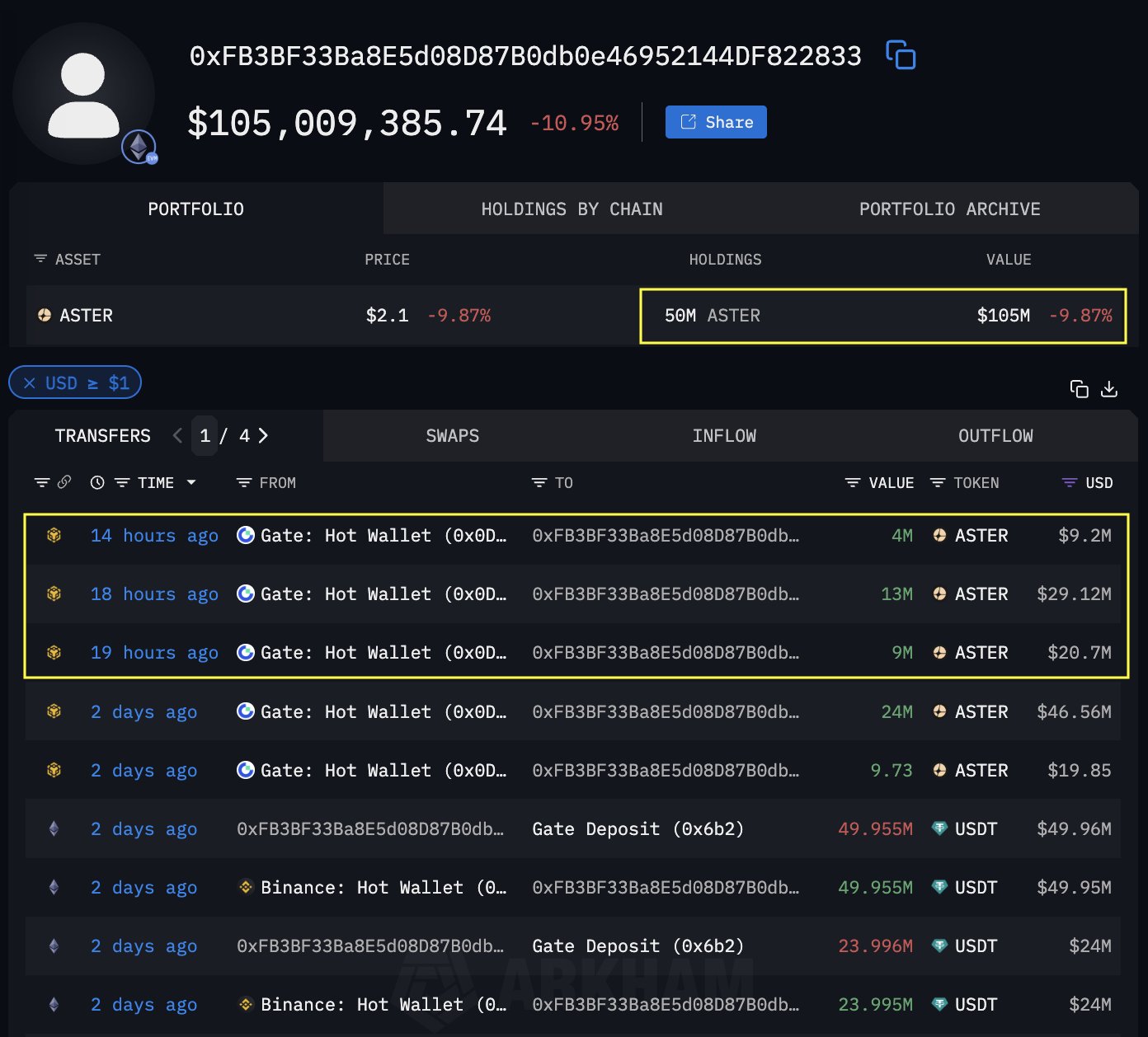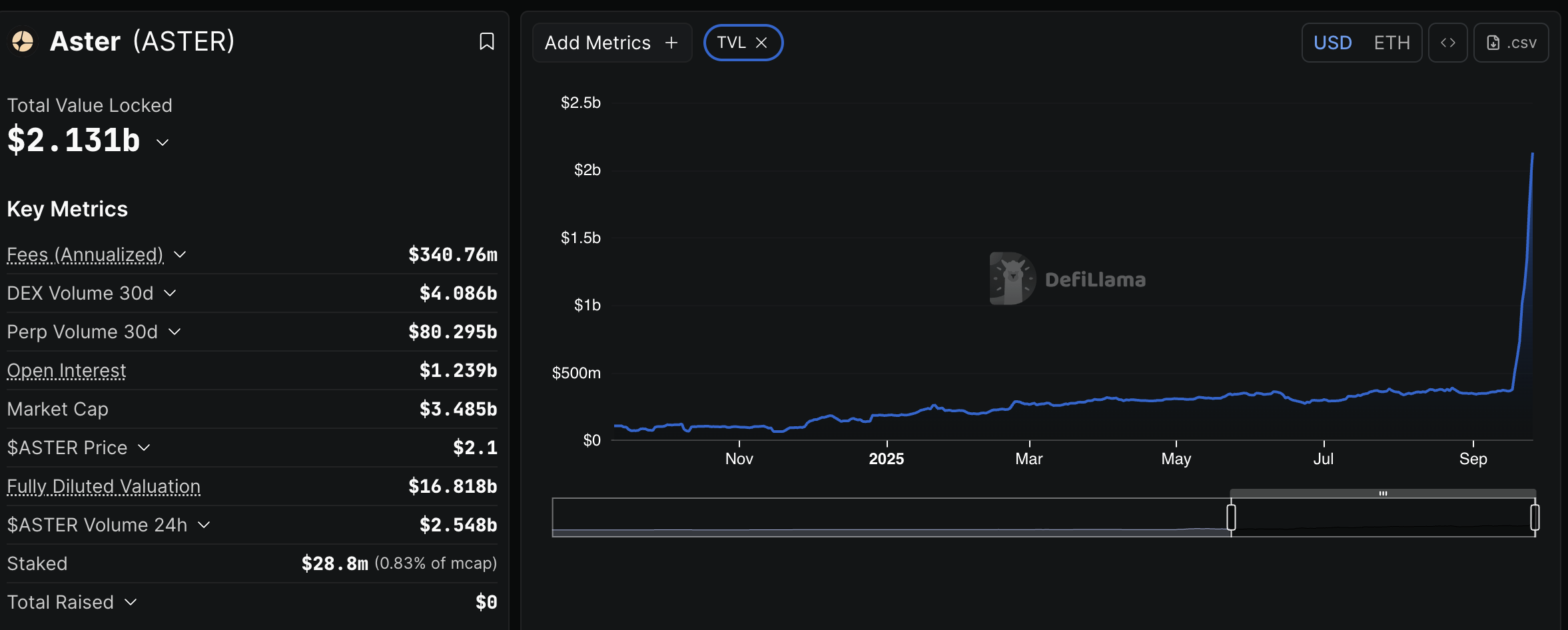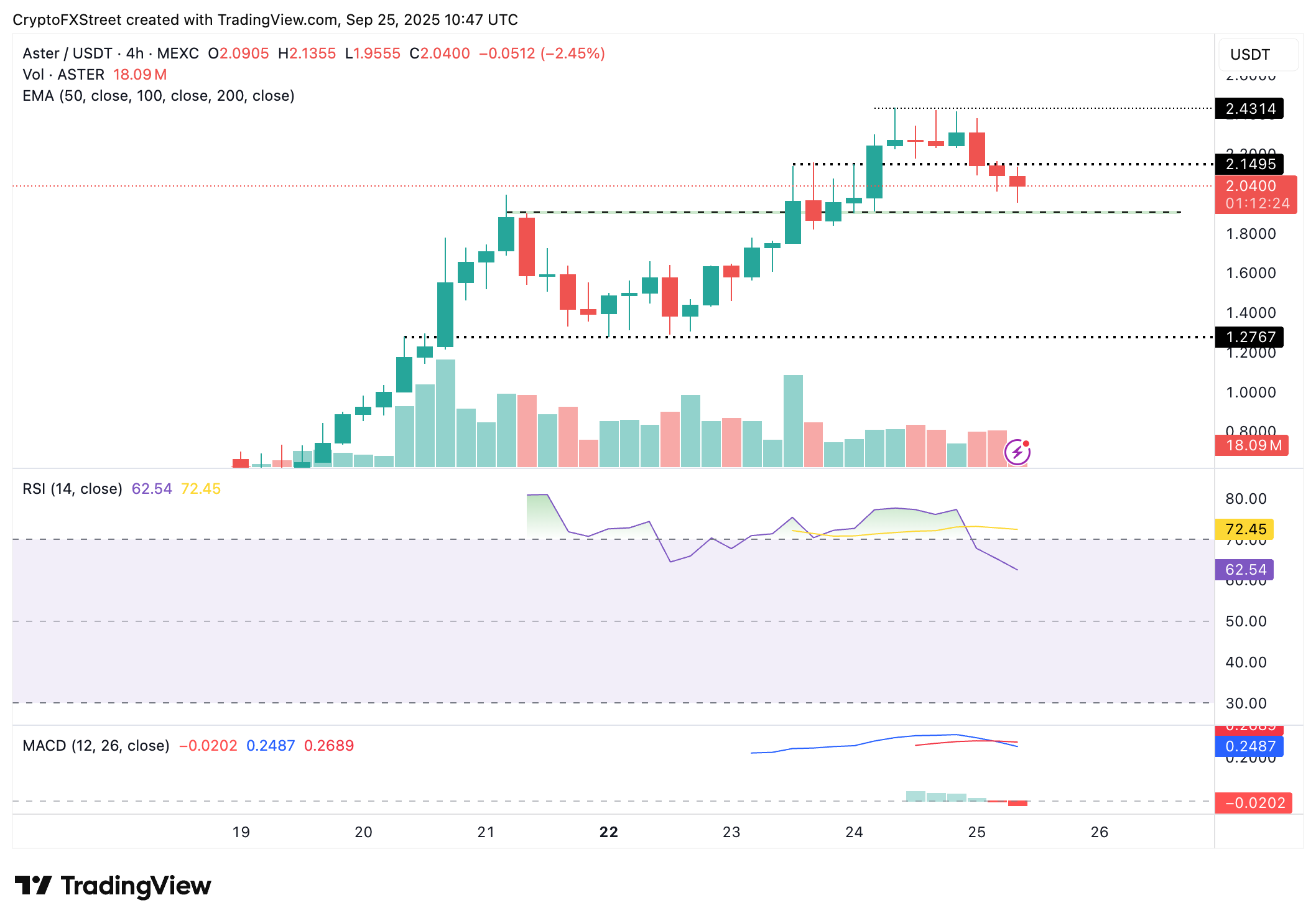Aster Price Forecast: ASTER Plummets 10% But Whales Remain Unfazed - Here’s Why
ASTER tanks double digits while crypto whales barely blink. The token's brutal 10% plunge rattles retail investors but leaves major holders completely unfazed.
Whale Watching: Big Money Stays Put
While panic selling swept through smaller portfolios, blockchain data reveals whale addresses actually increased their positions during the dip. These deep-pocketed investors seem to view the correction as a buying opportunity rather than a red flag.
Market Mechanics Behind the Move
Trading volume spiked 150% during the selloff, creating ideal conditions for accumulation. The 10% drop triggered stop-losses across leveraged positions, fueling the downward momentum before stabilization set in.
Historical Patterns Suggest Resilience
ASTER has weathered similar corrections three times this quarter alone, each time recovering within 48 hours. Whales appear to be betting on this pattern repeating - because when you've got eight-figure portfolios, a 10% swing is just Tuesday.
Meanwhile, traditional finance analysts are probably writing 'I told you so' reports with one hand while secretly checking crypto prices with the other. The token's next move could define its medium-term trajectory as the market watches whether retail confidence returns or whale patience wears thin.
Aster declines as whales buy the dip
Large-volume holders have piqued their interest in Aster, a perpetual Decentralized Exchange (DEX) native token on the BNB Chain. As reported by Fxstreet on Wednesday, whales have been scooping up ASTER tokens in millions, reflecting Optimism for the DEX’s role in the Binance ecosystem.
Despite the price correction, demand for Aster remains high, underpinned by whales increasing their exposure to the asset. According to data shared by SpotOnChain, a whale wallet has withdrawn 26 million ASTER valued at approximately $59 million from Gate exchange. The whale currently holds a total of 50 million ASTER worth around $105 million.

Aster whale holdings | Source: SpotOnChain
Another wallet, has also purchased 1.56 million ASTER, valued at approximately $3.52 million, from the Bybit exchange. This whale currently holds 8.28 million worth around $17.4 million.

Aster whale holdings | Source: SpotOnChain
According to DefiLlama, the surge in interest and investor confidence in ASTER has been mirrored by the steady increase in the protocol’s Decentralized Finance (DeFi) Total Value Locked (TVL), which has reached a record $2.13 billion on Thursday.
Prior to the token’s official launch last week, the TVL, which refers to the notional value of all tokens locked in smart contracts on the protocol, averaged $347 million by September 1.

Aster DeFi TVL | Source: CoinGlass
The sharp rise in TVL bolsters investor confidence in the token and the ecosystem, increasing the likelihood of the uptrend’s continuation beyond the record high of $2.43.
Technical outlook: Is Aster poised for recovery?
Aster holds around the $2.00 short-term support, largely supported by bullish sentiment in the ecosystem and demand from large-volume holders. A daily close above this level WOULD confirm the bullish grip, and possibly increase the probability of a rebound toward its all-time high at $2.43.

ASTER/USDT 4-hour chart
Still, traders should tread cautiously, considering the prevailing risk-off sentiment in the broader cryptocurrency market. Similarly, the decline in the Relative Strength Index (RSI) to 62 from the overbought region indicates that bearish momentum is building.
Therefore, a sustained correction below the short-term $2.00 support could result in the down leg extending to test the demand zone marked in green on the chart above at around $1.90. Other key areas of interest are $1.65, which was previously tested as resistance on Monday, and $1.27, which was tested as support.
Open Interest, funding rate FAQs
How does Open Interest affect cryptocurrency prices?
Higher Open Interest is associated with higher liquidity and new capital inflow to the market. This is considered the equivalent of increase in efficiency and the ongoing trend continues. When Open Interest decreases, it is considered a sign of liquidation in the market, investors are leaving and the overall demand for an asset is on a decline, fueling a bearish sentiment among investors.
How does Funding rates affect cryptocurrency prices?
Funding fees bridge the difference between spot prices and prices of futures contracts of an asset by increasing liquidation risks faced by traders. A consistently high and positive funding rate implies there is a bullish sentiment among market participants and there is an expectation of a price hike. A consistently negative funding rate for an asset implies a bearish sentiment, indicating that traders expect the cryptocurrency’s price to fall and a bearish trend reversal is likely to occur.

